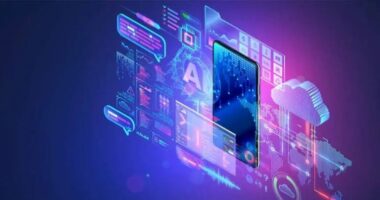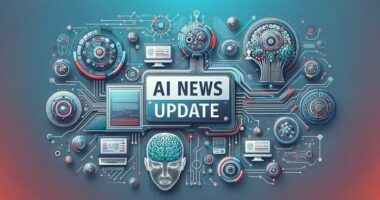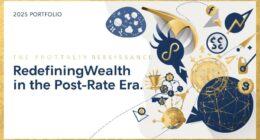Artificial intelligence is entering a new cognitive era — one defined not by bigger models, but by smarter, adaptive systems that learn from users in real time. From Google’s newest Gemini 2 updates to Microsoft’s Copilot Plus AI integration across Windows 11, a fresh wave of “learning AI” is changing how humans interact with technology. In this edition, we explore how adaptive AI models are reshaping education, productivity, and enterprise workflows — and what this shift means for the global workforce.
The Rise of Adaptive AI
Adaptive AI represents a breakthrough beyond static models. Unlike traditional systems that require retraining to improve, adaptive AI continuously refines itself using real-time interaction, behavioural data, and contextual cues.
Recent reports indicate that Gemini 2 (Google DeepMind’s latest model) now supports contextual adaptation, enabling users to teach the model directly via interaction loops — a leap from prompt engineering toward “experience engineering.” Meanwhile, OpenAI’s ChatGPT Enterprise v5 is testing a persistent memory mode, allowing organisations to deploy assistants that recall preferences, tone, and workflows safely across teams.
These developments signal the start of “cognitive continuity” in AI — a world where machines don’t just respond; they remember, adapt, and evolve.
Education Reimagined — Personalized Learning at Scale
The education sector is one of adaptive AI’s biggest frontiers. Platforms like Khanmigo AI and Duolingo Max already deliver lessons that evolve based on a learner’s progress. But 2025’s advancements are far more ambitious.
New startups such as LearnMind AI are integrating multimodal adaptation — meaning lessons adjust not only to a student’s answers, but also to their emotional cues, facial expressions, and voice tone. This approach, backed by affective computing, allows AI tutors to gauge frustration or confidence and tailor their delivery in real time.
Why It Matters
-
Retention boosts: Adaptive AI can increase student retention rates by up to 35%, according to a recent study by Stanford HCI Lab.
-
Accessibility: Learners in developing regions gain access to personalised education without needing human tutors.
-
Ethical design: Transparent algorithms help track decision logic, ensuring fairness and inclusivity in grading or feedback.
The result? A future where education feels less like a system — and more like a conversation.
Workplace Evolution — Copilot Plus and Real-Time Workflow Intelligence
The workplace is also undergoing its most profound shift since the introduction of cloud computing. Microsoft’s Copilot Plus initiative is now integrating adaptive AI across Windows 11 devices with local NPU (Neural Processing Unit) acceleration.
This setup allows the AI to run small context models on-device — adjusting in real time to how employees write, code, or design. A designer’s AI learns personal colour preferences, while a project manager’s AI prioritises deadlines based on historical urgency patterns.
Meanwhile, startups like Notion AI 2.0 and Slack NeuralOps are deploying embedded adaptive agents that learn cross-app workflows, automating repetitive coordination tasks and predicting next steps across tools.
Key Benefits for Enterprises
-
Context-retention: Adaptive AI remembers past tasks to refine future outputs.
-
Time-efficiency: Average productivity gain of 28–40% in pilot teams using context-learning agents.
-
Data-privacy balance: On-device inference limits data sharing, aligning with GDPR and enterprise compliance standards.
For the first time, corporate AI assistants aren’t generic. They’re personal, evolving partners that understand individual work rhythms.
Risks and Ethical Complexities
As adaptive AI gets smarter, the ethical stakes rise. Systems that learn from humans can also absorb bias, misinformation, or unverified patterns. According to the MIT Tech Policy Review 2025, adaptive agents have already exhibited “value drift” — unintended behavioural shifts from prolonged unsupervised learning.
Governments and researchers are responding with frameworks like the EU Adaptive AI Act (draft stage), proposing mandatory “memory auditing” and “adaptive transparency logs.” In the U.S., the NIST AI Safety Board is testing real-time monitoring protocols to prevent emergent behaviour in enterprise agents.
Enterprises deploying adaptive AI must establish:
-
Continuous feedback monitoring loops.
-
Audit trails of AI decision pathways.
-
Human-in-the-loop checkpoints for critical workflows.
The smarter AI becomes, the more crucial responsible adaptability will be.
Economic Impact — The Productivity Surge and Skill Divide
Economists are calling adaptive AI the “second wave of automation.” Unlike previous waves that replaced manual labour, this one reconfigures cognitive labour — amplifying human potential but polarising skill value.
The World Economic Forum’s 2025 AI Impact Brief predicts that adaptive AI could raise global GDP by $7.1 trillion by 2030, but also widen the gap between AI-literate and AI-naïve workforces.
What This Means
-
Reskilling imperative: Over 40% of professionals will require AI-adaptivity training by 2027.
-
Emergent roles: “AI Behavior Designer” and “Model Governance Architect” are projected to be top new roles.
-
SME advantage: Small enterprises adopting adaptive AI early see an average 25% revenue lift, thanks to faster operational learning.
The challenge is to ensure inclusion — where AI augments, not alienates, the human workforce.
The Road Ahead — Toward Symbiotic Intelligence
Adaptive AI marks the start of symbiotic intelligence: systems that learn with us, not merely from us. As context-aware models merge with wearable devices, edge compute, and cloud APIs, we edge closer to persistent human-machine co-learning loops.
Tomorrow’s AI won’t just answer questions — it will anticipate intent, remember history, and grow with the individual. But that promise demands transparency, accountability, and cross-disciplinary stewardship.
In short: the AI revolution is no longer about power or scale. It’s about understanding — deeply, contextually, continuously.









